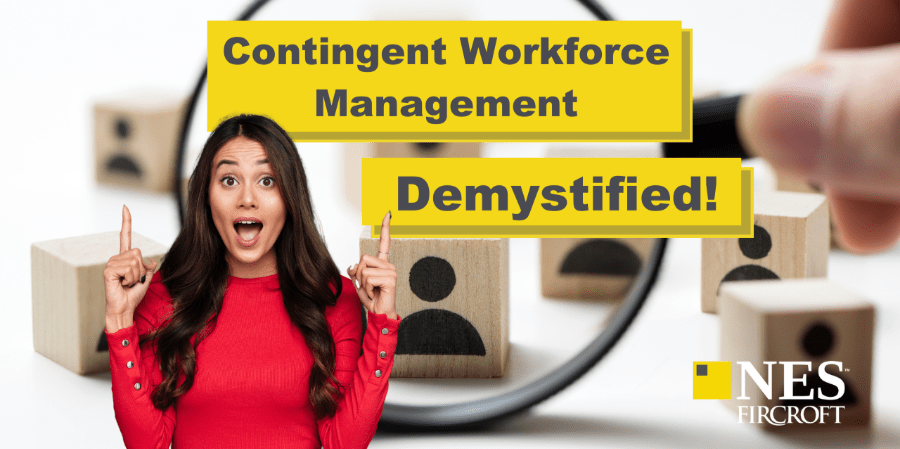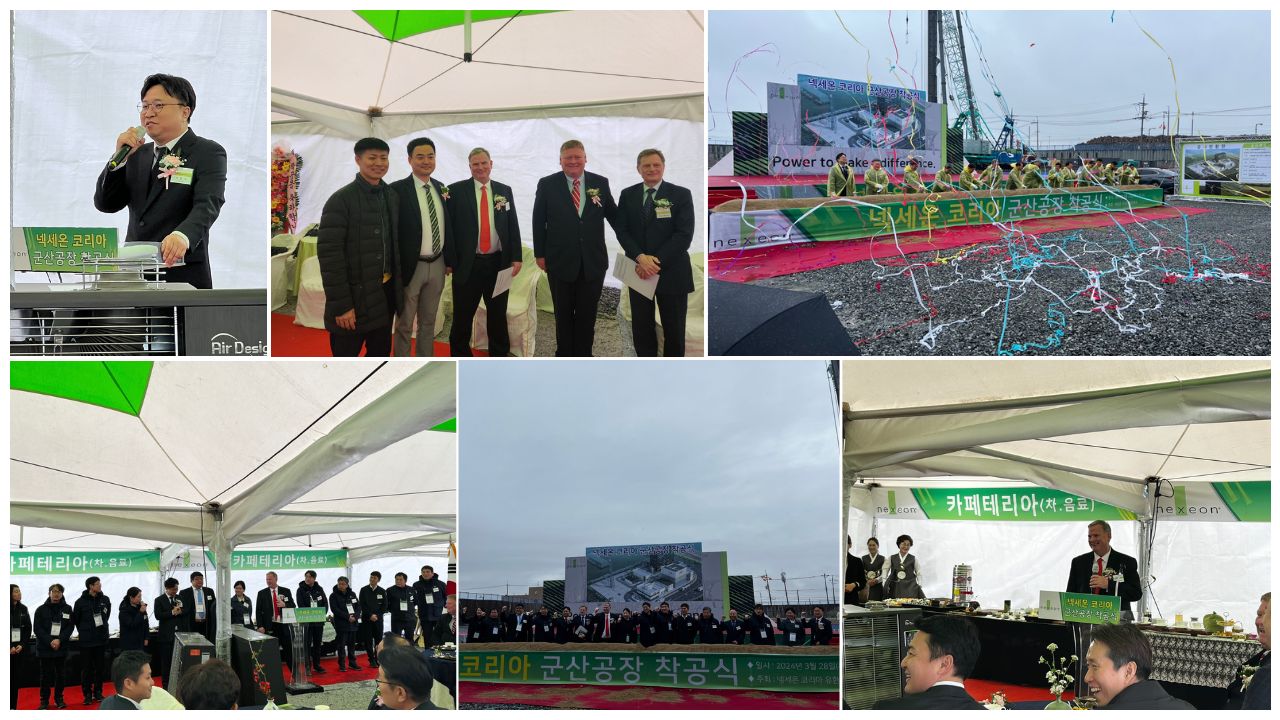
Contingent Workforce Management Demystified
26 May, 20224:28Over the last decade, the demand for workforce solutions to help organisations hir...

Over the last decade, the demand for workforce solutions to help organisations hire, engage, and manage contingent workers has grown substantially.
Whilst this has led to the creation of innovative and comprehensive solutions to address the complexities of managing a contingent workforce, it can also be confusing for companies new to the concept.
Companies looking into contingent workforce management solutions will come across many acronyms, terms, or labels together with service options that make the choice seem rigid or predetermined. This in turn can make it feel like contingent workforce management isn’t 100% fit for what you are trying to achieve or address.
However, this is a common misconception – in reality, these solutions can be completely tailored to your individual needs.
So, if you’re trying to decide if Contingent Workforce Management will work for your company, here’s everything you need to know to demystify the different workforce solution models, the acronyms, the benefits and misconceptions.
What does contingent workforce management really mean?
Contingent Workforce Management is the process of managing ‘non-permanent workers’ in your organisation from the sourcing, selection, and engagement of workers; to managing the administration of contracts, transactions (time/expense), invoicing and the successful offboarding upon completion of work.
Put like this, is sounds quite straightforward and easy to grasp the concept, and to some extent it is. However, with solution providers striving to differentiate themselves from competitors, several models and terms for the solutions provided have emerged, often confusing organisations looking to elevate how they manage contingent workers more effectively.
Contingent workforce management acronyms and terms demystified
Like most industries, the recruitment sector has a whole host of unique terms and acronyms that can be difficult to get your head around. Some include MSP, Master Vendor, Hybrid MSP, Contingent RPO, Contingent Workforce Management, Vendor Neutral, VMS, ATS… the list goes on!
To help you understand, here are the key terms to note and their definitions:
- Managed Service Provider (MSP) - is a service, where a specialist recruitment outsourcing provider assumes primary responsibility for the management of sourcing, engagement, and administration of temporary, contract and other non-permanent workers (“Contingent Workers”).
- Vendor Neutral – the MSP provider is responsible for the entire workflow by managing an agreed list of agencies/suppliers to source the workers you need. Typically, the provider is not affiliated to a staffing or recruitment business and does not provide recruitment services. Instead, they manage the agencies/suppliers in a neutral capacity, promoting equal opportunity for suppliers and process management.
- Master Vendor - one supplier is appointed to manage and complete most of the contingent hiring needs. They typically will fulfil 80-90% of all hiring themselves supported by a smaller sub-tier of agencies/suppliers
- Contingent RPO – RPO stands for ‘Recruitment Process Outsourcing’. RPO is the common term used for outsourcing your permanent recruitment function to hire permanent employees. Solution providers labelling their services as ‘Contingent RPO’ often provide recruitment services in addition to the main MSP service, often know as ‘Direct Sourcing’.
- Direct Sourcing – the provider creates a dedicated recruiting team to build a dedicated talent pool using your brand to source workers directly without using agencies/suppliers.
- Hybrid MSP – The hybrid model approach combines a variety of services from the Vendor Neutral, Master Vendor and Direct Sourcing models, creating a solution that includes the best or most relevant parts of all the models.
What are the common misconceptions?
1. Contingent workforce management solutions cannot be bespoke
No two workforce solutions are the same. Every organisation has differing objectives alongside the common need to source and manage workers effectively. You may wish to outsource the entire recruitment function, whilst another organisation may want to retain ownership of some elements. Perhaps you have a master supplier you wish to retain for a particular site but open competition for other areas of your business. You may want technology to automate as much as possible, or simply focus it on the core processes. All workforce solutions should be bespoke and not just 'off-the-shelf' solutions.
2. The primary purpose of workforce management solutions is to provide costs savings
It is safe to say that cost savings are an important aspect of deciding to adopt a workforce solution and can deliver substantial savings over a short and long-term period. However a workforce solution is more than just savings, and to realise the saving opportunity, you need to achieve process efficiencies, utilise technology, optimise your supply chain and reduce invoice delays/errors. Cost savings are the ‘sum of all parts' rather than the sole purpose/strategy of your solution.
3. A workforce management solutions provider doesn’t need industry sector experience to be successful
Most workforce solution providers will offer best practices and processes as part of their workforce management solutions which do not require them to have a particular industry sector experience. Whilst this allows them to provide a consistent and standardised experience from a workflow/process admin function, deep industry sector experience is important to provide insights and knowledge that are relevant to your sector. For example, selecting/managing/motivating suppliers to provide the talent you need requires your workforce management partner to understand the sector, skills required and challenges they face. The same goes for supporting your hiring managers with insights and options on how best to source the talent they need, the market trends and the best location of talent to source from.
4. I don’t need an MSP organisation, just a Vendor Management System (VMS)
While technology is an important component of any workforce management solution, the software on its own is not the entire solution. Technology is the enabler offering efficiency, transparency, visibility and greater control. However, without the people working alongside it, providing the best practices and processes, it cannot fulfil the entire solution. Skilled experts are still required to facilitate the activities and collaborate with all stakeholders and suppliers. For example, how can technology determine if your rates are in line with the market, or maintain data quality and provide insights?
Success comes from realizing how many people/teams it takes to make a programme work and not just the on-site person you see every day, but the teams/functions that sit behind them supporting.
5. All of the services have to be outsourced
If you decide to outsource, it doesn’t mean that 100% of your workforce management requirements have to be. Workforce solution providers should understand that different organisations have different requirements and therefore offer a solution and level of support right for you – allowing you to pick and choose when selecting the services you require.
Why use NES Advantage to manage your contingent workforce?
Our approach is simple - we advise organisations on the most appropriate ‘Workforce Solution’ that is designed specifically to achieve their objectives, and is relevant to their industry sector, geographies, and needs.
When you partner with us, you can design a workforce solution to suit your needs. One size rarely fits all, and with a hybrid model you can leverage different sourcing models for different skills, locations and sectors as required. This allows you to develop the optimal supply chain strategy, with several supply options, all whilst benefiting from one partner who deeply understands your industry sector, business needs and objectives.
Get in touch with our experts to discuss how we can support your workforce needs.









